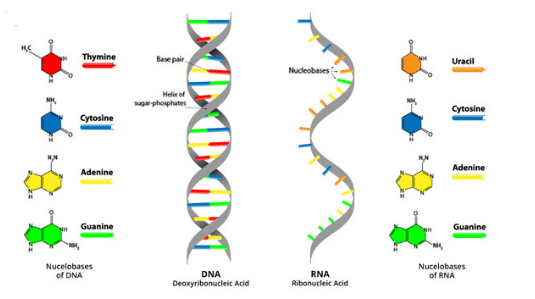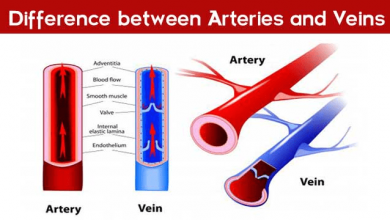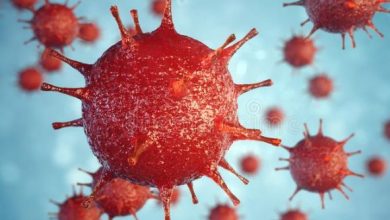What is the Difference Between DNA and RNA?
the major difference between DNA and RNA is that DNA is a double-stranded except in a few viruses and has deoxyribose sugar. DNA is the genetic material in all living organisms while RNA is a single-stranded except in some viruses and has ribose sugar. RNA is the genetic material in some viruses.
Difference Between DNA and RNA in Table
| DNA | RNA |
| DNA has sugar moiety in deoxyribose | RNA has sugar moiety in ribose |
| No natural DNA is catalytic | RNA can be catalytic in some cases |
| the bases in DNA are present Adenine, Thymine, Cytosine, and Guanine, etc. Uracil is not present. | In the RNA,, the bases are present Adenine, Uracil, Guanine, and Cytosine. the Thymine is present rarely. |
| it has the double-stranded molecule | it has the single-stranded molecule |
| Bases are not modified in DNA | in RNA, the bases are modified |
| the DNA lifetime is comparatively high | the lifetime of RNA is low. they are short-lived. |
| they obey chargaff’s rule | they don’t obey chargaff’s rule |
| often present in chromoplast, mitochondria, and nucleus | they are present in the nucleus, mitochondria, nucleolus ribosomes, and cytosol also, |
| It transcribes genetic information to RNA. | translates the transcribed message to form polypeptides. |
| it is only present in two types intra-nuclear and extra-nuclear. | mRNA, rRNA, and tRNA are the three major types of RNA mostly seen. |
| stable and not easily hydrolyzed by alkalis | highly unstable and easily hydrolyzed by alkalis |
| It replicates to form a new DNA molecule. | It cannot be itself replicated in normal cases. |
| unusual bases are not present. | unusual or modified bases are often present in RNA. |
| present in a fixed quantity for cells. | present in variable quantity for a cell. |
| purine and pyrimidine bases are in equal numbers. | purine and pyrimidine bases are in variable numbers in RNA. |
| DNA occurs in the form of chromosomes, chromosomes or chromatin. | occurs in chromosomes or associates with ribosomes. |
What is Deoxyribonucleic Acid (DNA)?
DNA consists of deoxyribose sugar. Its structure was discovered by J. Watson and F. Crick in 1953. It is a long double-stranded molecule consisting of two chains. Each chain is made up of a sugar, phosphate and a base.
[wp_ad_camp_1]
The sugar and phosphate groups make the backbone of the chains and two chains are linked through the bases. The chains are wrapped around each other in a double helix form. DNA is a permanent storage place for the genetic information in the nucleus of a cell. It carries and stores all the genetic pieces of information of the cell.
It passes this information’s as instruction from generation to generation hoe to synthesize particular proteins from amino acids. These instructions are ‘genetic code of life’. They determine whether an organism is a man or a tree or a donkey and whether a cell is a nerve cell or a muscle cell.
The sequence of nitrogenous bases in DNA determines the protein development in the new cells. The function of the double helix formation of the DNA is to ensure that no disorder takes place.
DNA carries genes to controls the synthesis of the RNA. Errors introduced into the genes synthesis faulty RNA. It’s anthesis of faulty proteins that do not function the way they are supposed to. This disorder causes genetic diseases.
[wp_ad_camp_2]
What is Ribonucleic Acid (RNA)?
It consists of the ribose sugar. It is a single-stranded molecule. It is responsible for putting the genetic information to work in the cell to build proteins. It’s role as a messenger.
RNA is synthesized by DNA to transmit genetic information. RNA receives, reads, decodes and uses the given information to synthesize new proteins. Thus RNA is responsible for directing the synthesis of new proteins.
You May Also Like:



